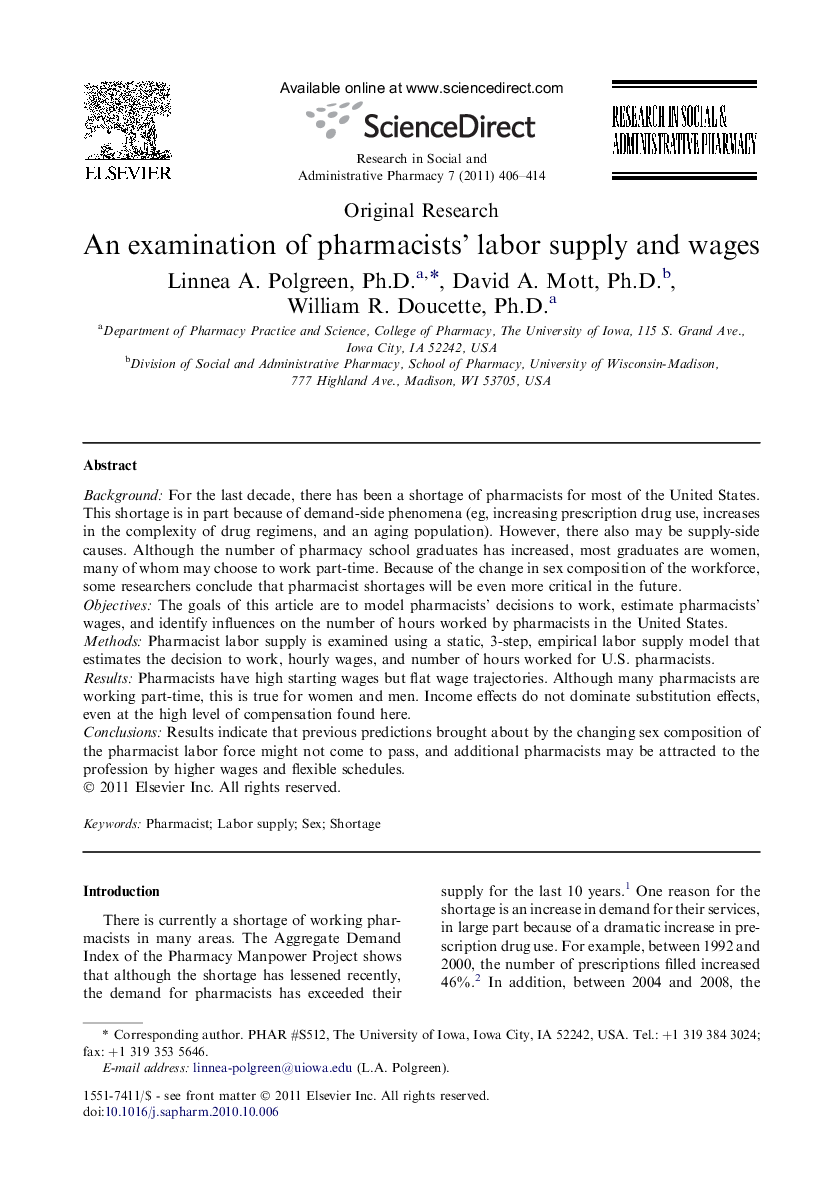| Article ID | Journal | Published Year | Pages | File Type |
|---|---|---|---|---|
| 2508387 | Research in Social and Administrative Pharmacy | 2011 | 9 Pages |
BackgroundFor the last decade, there has been a shortage of pharmacists for most of the United States. This shortage is in part because of demand-side phenomena (eg, increasing prescription drug use, increases in the complexity of drug regimens, and an aging population). However, there also may be supply-side causes. Although the number of pharmacy school graduates has increased, most graduates are women, many of whom may choose to work part-time. Because of the change in sex composition of the workforce, some researchers conclude that pharmacist shortages will be even more critical in the future.ObjectivesThe goals of this article are to model pharmacists’ decisions to work, estimate pharmacists’ wages, and identify influences on the number of hours worked by pharmacists in the United States.MethodsPharmacist labor supply is examined using a static, 3-step, empirical labor supply model that estimates the decision to work, hourly wages, and number of hours worked for U.S. pharmacists.ResultsPharmacists have high starting wages but flat wage trajectories. Although many pharmacists are working part-time, this is true for women and men. Income effects do not dominate substitution effects, even at the high level of compensation found here.ConclusionsResults indicate that previous predictions brought about by the changing sex composition of the pharmacist labor force might not come to pass, and additional pharmacists may be attracted to the profession by higher wages and flexible schedules.
